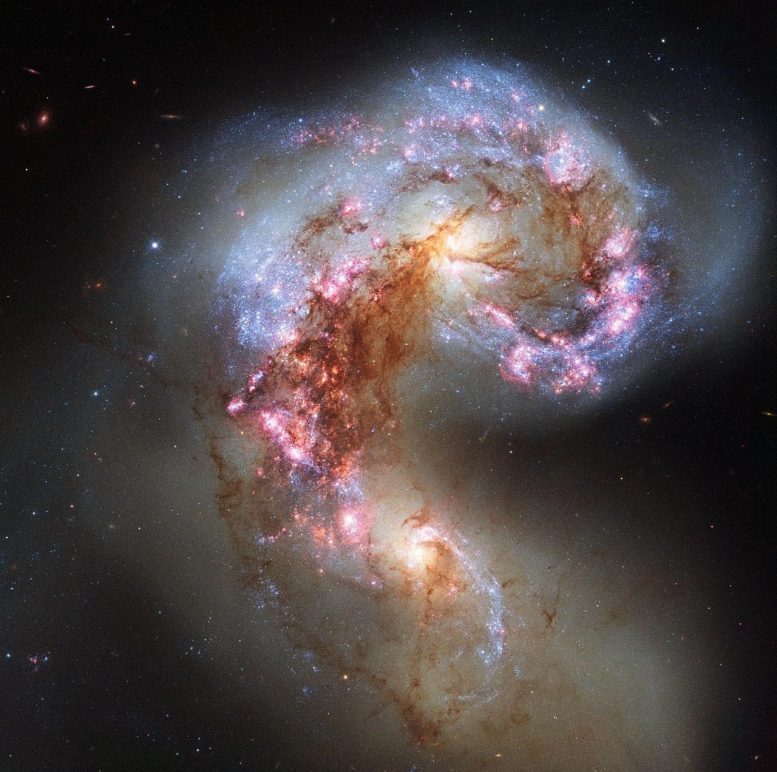
Caldwell 60 and Caldwell 61, were once like the Milky Way, but collided a few hundred million years ago, resulting in a violent clash that caused stars to be ripped from their galaxies to form a streaming arc between them. Credit: NASA
This Hubble image shows two galaxies locked in a fateful embrace. Caldwell 60 (NGC 4038) and Caldwell 61 (NGC 4039) are known as the Ringtail or Antennae galaxies. At one time they were normal, sedate spiral galaxies similar to the Milky Way, but this galactic pair has spent the past few hundred million years sparring. This violent clash has ripped stars from their host galaxies to form a streaming arc between the two combatants. Wide-field views of the duo reveal long streamers of stars extending outward into space like a set of antennae, giving the duo their common nickname.
This video zooms through the nighttime sky into the constellation Corvus, then deeper into Hubble’s view of the Antennae galaxies. Brilliant blue star clusters, born in the collision, pepper the galaxies. Pinkish, glowing hydrogen gas surround star-birth regions glowing under the intense energy from newborn stars. Credit: NASA, ESA and G. Bacon (STScI); Acknowledgment: NASA, ESA, A. Fujii, Digitized Sky Survey (DSS), STScI/AURA, Palomar/Caltech, UKSTU/AAO, B. Twardy/A. Block/NOAO/AURA/NSF, M. Kornmesser (ESA/Hubble), B. Whitmore (STScI) and the Hubble Heritage (STScI/AURA)-ESA/Hubble Collaboration
Hubble has targeted the Antennae galaxies multiple times over the years. Signs of chaos are obvious in this image released in 2013, which combines ultraviolet, visible and infrared observations from Hubble’s Wide Field Camera 3 along with some previous observations from the Advanced Camera for Surveys. Blossoming clouds of pink and red gas cradle flashes of blue where new stars have just formed. Dark streaks of dust, pulled from the individual galaxies, sweep through and obscure vast parts of the scene.
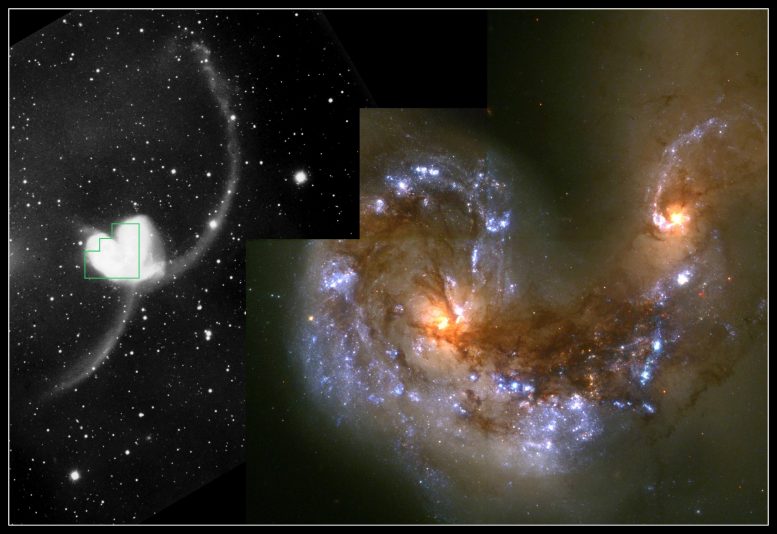
A ground-based telescopic view on the left shows the long tails of the Antennae galaxies. On the right, a natural-color image taken by Hubble in 1996 shows the respective cores of the twin galaxies (the orange blobs) crisscrossed by filaments of dark dust. A wide band of chaotic dust, called the overlap region, stretches between the cores of the two galaxies.
Credit: Brad Whitmore (STScI) and NASA
Hubble’s observations have uncovered over a thousand bright, young star clusters bursting to life as a result of the head-on wreck. The sweeping spiral-like patterns, traced by these bright blue star clusters, show the result of a firestorm of star birth activity triggered by the collision. The extraordinary rate of star formation in the Antennae galaxies is known as a starburst, a period in which all of the gas within the galaxies is being used to form stars. Eventually, this stellar inferno will burn itself out and the galaxies will settle down. The galactic cores will coalesce, and the once-separate galaxies will merge into one large elliptical galaxy.
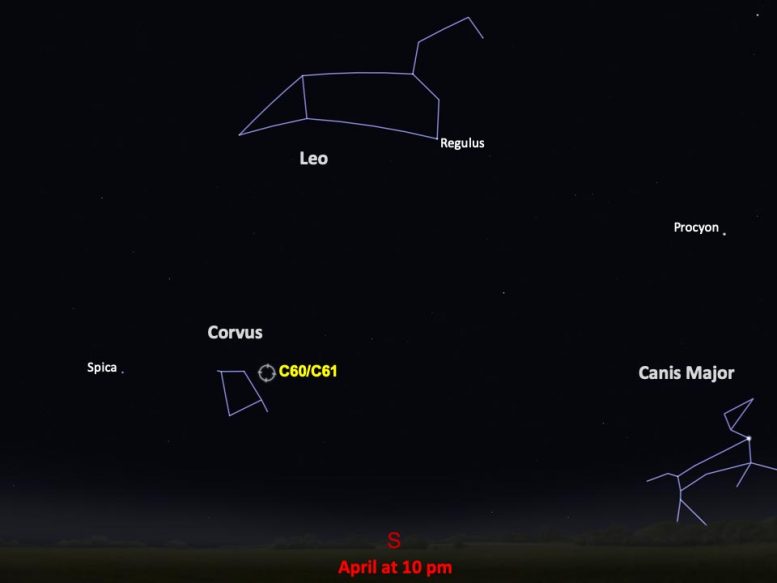
This star chart for Caldwells 60 & 61 represents the view from mid-northern latitudes for the given month and time. Credit: Image courtesy of Stellarium
The Antennae galaxies were discovered by astronomer William Herschel in 1785. They are located about 65 million light-years away in the Corvus constellation, best seen in autumn skies in the Southern Hemisphere but also visible in the springtime from the Northern Hemisphere. The galaxies have magnitudes of approximately 10.5 and 11, so a moderate to large telescope and dark skies are needed for optimal viewing. Even with a large telescope the Antennae galaxies will most likely resemble a faint, hazy comma.


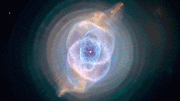
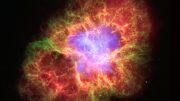


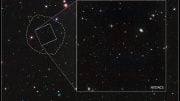
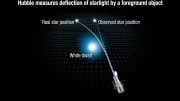
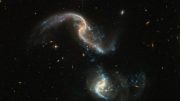
It is love, not war. See the heart?
Good one